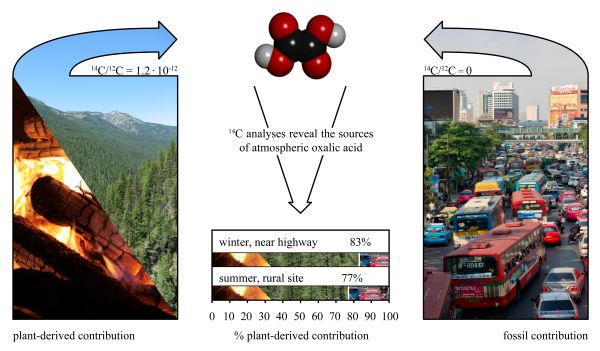|
|
Molecule of the Month December 2010 |
|
| What are the Sources of Oxalic Acid in Air-Borne Particulate Matter? | ||

|
||
|
Atmospheric particulate matter contains significant amounts of oxalic acid. However, the origins of this dicarboxylic acid have been discussed controversially and mechanisms for a plant-derived formation (biogenic emissions and wood burning, left picture) as well as fossil sources (use of fossil fuels, right picture) have been taken into account.
This work was carried out in the group of PD Dr. Sönke Szidat. References:
|
||